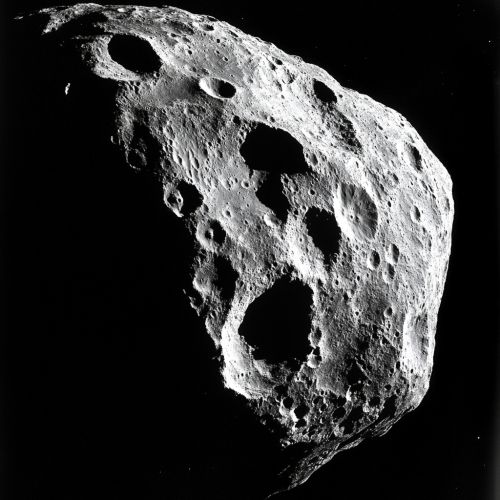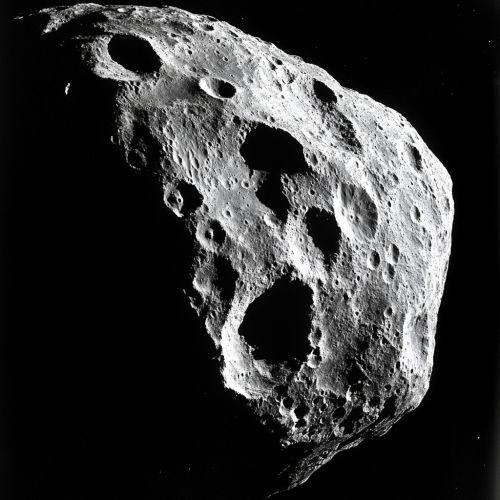Small Bodies of the Solar System
Introduction
Small bodies of the Solar System encompass a diverse array of celestial objects that are neither planets nor dwarf planets. These include asteroids, comets, meteoroids, centaurs, and trans-Neptunian objects. They are remnants from the early Solar System, providing invaluable insights into its formation and evolution. This article delves deeply into the characteristics, classifications, and scientific significance of these small bodies.
Asteroids
Asteroids, also known as minor planets, are rocky bodies primarily found in the asteroid belt between Mars and Jupiter. They range in size from a few meters to hundreds of kilometers. The largest asteroid, Ceres, is also classified as a dwarf planet.
Composition and Structure
Asteroids are composed of various materials, including silicate rock, metal, and carbonaceous compounds. They are categorized into three main types based on their spectral characteristics:
- **C-type (carbonaceous)**: These are the most common, comprising about 75% of known asteroids. They are rich in carbon and have a dark appearance.
- **S-type (silicaceous)**: These make up about 17% of known asteroids and are composed primarily of silicate minerals and nickel-iron.
- **M-type (metallic)**: These are composed mainly of metallic iron and nickel and constitute about 8% of known asteroids.
Orbital Characteristics
Asteroids have diverse orbits, with some residing in the main asteroid belt, while others, known as Near-Earth Asteroids (NEAs), have orbits that bring them close to Earth's orbit. The Kirkwood gaps are regions within the asteroid belt where the gravitational influence of Jupiter creates gaps in the distribution of asteroid orbits.


Comets
Comets are icy bodies that originate from the outer regions of the Solar System, specifically the Kuiper Belt and the Oort Cloud. When they approach the Sun, the heat causes their ices to sublimate, creating a glowing coma and often a tail.
Composition and Structure
Comets are composed of a nucleus made of ice, dust, and rocky material. The nucleus is typically a few kilometers in diameter. As a comet nears the Sun, the heat causes the volatile materials to vaporize, forming a coma and sometimes a tail that can extend millions of kilometers.
Classification
Comets are classified based on their orbital periods:
- **Short-period comets**: These have orbits that take less than 200 years to complete. They are believed to originate from the Kuiper Belt.
- **Long-period comets**: These have orbits that take more than 200 years to complete and are thought to originate from the Oort Cloud.
Meteoroids, Meteors, and Meteorites
Meteoroids are small rocky or metallic bodies in space, typically smaller than asteroids. When a meteoroid enters Earth's atmosphere and vaporizes, it becomes a meteor, commonly known as a shooting star. If any part of the meteoroid survives the atmospheric entry and lands on Earth, it is called a meteorite.
Composition and Classification
Meteoroids can be composed of various materials, including:
- **Stony (chondrites and achondrites)**: These are the most common and are composed primarily of silicate minerals.
- **Iron**: These are composed mainly of metallic iron and nickel.
- **Stony-iron**: These contain roughly equal parts of silicate minerals and metallic iron-nickel.
Centaurs
Centaurs are small bodies with characteristics of both asteroids and comets. They orbit the Sun between Jupiter and Neptune and are believed to be transitional objects, possibly originating from the Kuiper Belt.
Characteristics
Centaurs have unstable orbits due to gravitational interactions with the giant planets. They exhibit both cometary and asteroidal features, with some showing comet-like activity such as outgassing.
Trans-Neptunian Objects (TNOs)
Trans-Neptunian Objects are celestial bodies that orbit the Sun beyond Neptune. They include objects in the Kuiper Belt and the more distant scattered disc and Oort Cloud.
Kuiper Belt Objects (KBOs)
The Kuiper Belt is a region beyond Neptune populated by icy bodies. Notable KBOs include Pluto, Haumea, and Makemake. These objects are composed primarily of frozen volatiles such as methane, ammonia, and water.
Scattered Disc Objects (SDOs)
Scattered Disc Objects have highly eccentric and inclined orbits, believed to be caused by gravitational interactions with Neptune. They are thought to be the source of many short-period comets.
Scientific Significance
Small bodies of the Solar System are of immense scientific interest because they are considered to be the building blocks of the Solar System. Studying them helps scientists understand the processes that led to the formation of planets and other celestial bodies. Missions such as Rosetta, Dawn, and New Horizons have provided valuable data on these objects.
